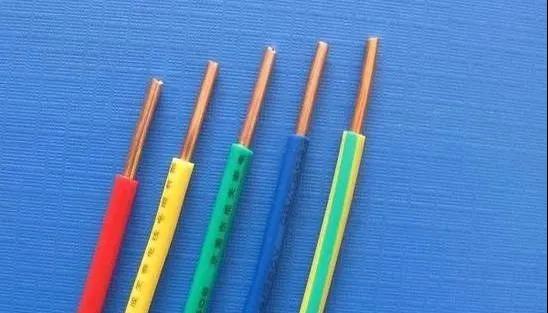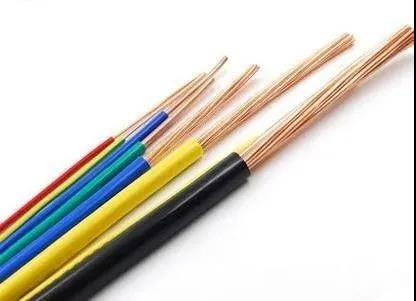High-quality aluminum alloy conductor sales rods are the decisive factor for the electrical and mechanical properties of aluminum alloy cables. Without high-quality aluminum alloy rods, no matter how the drawing, stranding, cabling, armoring, etc. are in the subsequent processes, they cannot be changed. The basic quality of its conductor. Aluminum alloy cable manufacturers must have an alloy formula that meets the production of AA8000 series conductor aluminum alloys, and have conductor aluminum alloy rod smelting, continuous casting and rolling production lines. That is to say, they can produce conductor aluminum alloy materials. If an enterprise does not have this basic ability, where do the rods come from? The quality of the rod material is fundamentally uncontrollable. How can we produce qualified aluminum alloy cable products? The products of this kind of enterprise are really worrying.

In terms of use, there is a big difference between aluminum alloy cables AWG and copper cables. Everyone is very familiar with copper cables. They are made of a single metal material. After decades of application, the application technology of copper cables and the supporting accessories such as connecting terminals have become very mature. Because the conductor of the aluminum alloy cable is made of aluminum alloy material, there is currently no accessory products such as aluminum alloy copper connection terminals that are consistent with the performance of the alloy cable. Currently, the industry uses copper-aluminum transition terminals that were originally used to connect aluminum cables and the recent so-called high-conductivity microalloy copper transition terminals that only improve the conductivity of the terminals (the aluminum alloy terminals are also claimed to be external, but the concept is actually confused). In fact, these application schemes are extremely wrong. Aluminum alloy cable is a new type of conductor material invented to improve the physical, mechanical, compressive creep resistance and other properties of pure aluminum cables, and there are hidden safety hazards in use. Now the application of aluminum alloy cables uses aluminum in the connection. Or the so-called non-conducting aluminum alloy that is inconsistent with the performance of the aluminum alloy cable is used as the connection, then all the defects of aluminum or non-conducting aluminum alloy still exist, and the hidden safety hazard still exists. As we all know, the potential safety hazards of cables in applications basically lie in the connection. At present, because of the existence of aluminum or the so-called non-conducting aluminum alloy in the connection of aluminum alloy cables, the advantages and value of aluminum alloy cables cannot be used and reflected at all. What is the difference between this and the direct use of aluminum cables? The truly correct and perfect connection scheme is to use aluminum alloy copper connection terminals that are consistent with the performance of the aluminum alloy cable as the connection accessory.

After comparing aluminum alloy cables and copper cables, let’s look at aluminum alloy cables and aluminum cables. There is a saying in the market that aluminum alloy cables are better than aluminum cables, even if the quality is a little bit worse, it does not matter, in fact, it is far from the case. Aluminum alloy cables that do not meet the requirements of the national industry standard for aluminum alloy cables “Rated Voltage 0.6-1kV Aluminum Alloy Conductor Cross-linked Polyethylene Insulated Power Cable” are unqualified products and are genuine fake and inferior products. Perhaps many users do not know that unqualified aluminum alloy cables are actually inferior to aluminum cables, because the base material of conductor aluminum alloy is aluminum, and conductor aluminum alloy is based on the core technical formula and process by adding other metal elements to aluminum and then alloying and smelting. , New materials made by casting and rolling, qualified conductor aluminum alloy materials can return to the level of aluminum after electrical properties are processed, and their physical and mechanical properties are much better than aluminum. Unqualified so-called aluminum alloys cannot be restored to the level of aluminum because of their lack of core technology, mature production technology and professional production equipment. Due to alloy formula, smelting, processing technology and other reasons, the electrical properties of the produced aluminum alloy cannot be restored to the level of aluminum. , The mechanical properties cannot be effectively improved, and the overall performance is not as good as aluminum. Therefore, it is better to use aluminum cables than unqualified aluminum alloy cables. After all, aluminum cables are more economical and safer than unqualified aluminum alloy cables.
Although aluminum alloy cables have been hyped up, in fact, there are only a handful of professional manufacturers with alloy cable intellectual property technology and equipment in the country that can produce qualified alloy cables. From the perspective of cost, the cost of qualified aluminum alloy conductors is similar to that of high-quality electrolytic copper. The cost advantage of aluminum alloy cables over copper cables is mainly that cables of different lengths can be produced with the same weight of materials. For unqualified so-called alloy cables, the cost of conductor materials is basically the cost of aluminum materials. For unqualified alloy cables in the market, firstly, the conductor material is unqualified. Secondly, because the manufacturer does not have core formula technology, mature alloy cable production technology and production technology, the alloy cable products produced cannot meet the requirements of qualified alloy cables. It can be said that it is fundamental It is not a real aluminum alloy cable. Such fake and counterfeit products can only be sold at low prices.
